Search Images
Browse Content (p. 1568)
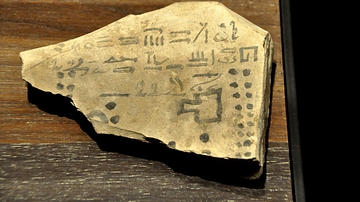
Image
Ostracon from Ancient Egypt
This limestone stone chip (ostracon) depicts a garden plan and a note about a delivery of donkeys. From modern-day Egypt. New Kingdom, 19th Dynasty, circa 1250 BCE. (State Museum of Egyptian Art, Munich, Germany).
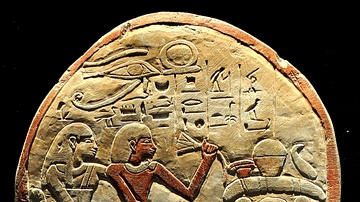
Image
Stela of Penre
Limestone stela of the royal stonecutter Penre. New Kingdom, 18th Dynasty, 1500 BCE. (State Museum of Egyptian Art, Munich, Germany).
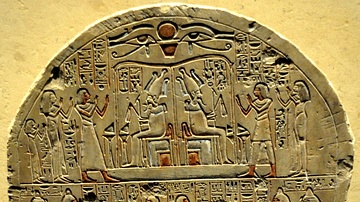
Image
Stela of Sobeknakht, Abydos
Limestone stela of Sobeknakht, the overseer of Amun's temple. The stela shows an offering scene and a formula. From Abydos, modern-day Egypt. New Kingdom, 18th Dynasty, circa 1380 BCE. (State Museum of Egyptian Art, Munich, Germany).
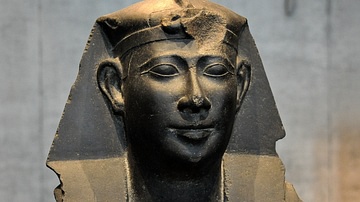
Image
Egyptian Royal Statue
Basalt head of a royal statue; the depicted person is unknown. Ptolemaic period, 2nd century BCE. (State Museum of Egyptian Art, Munich, Germany).
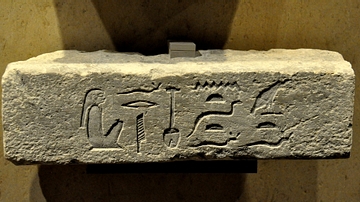
Image
Block of Neferi
Limestone block which mentions the name of Neferi. From Giza, modern-day Egypt. Old Kingdom, 5th Dynasty, circa 2400 BCE. (State Museum of Egyptian Art, Munich, Germany).
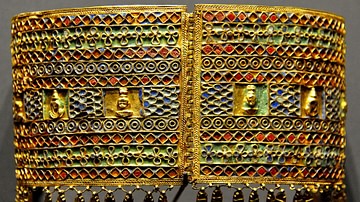
Image
Armlet from Meroe
Gold armlet with pendants and busts of gods. From the treasure of the Nubian queen Amanishakheto, pyramid N6, Meroe, modern-day northern Sudan. Meroitic period, around 1 CE. (State Museum of Egyptian Art, Munich, Germany).
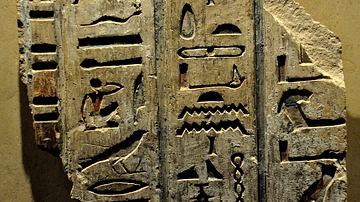
Image
Vizier Bakenrenef Inscription
Limestone fragment of an inscription from the tomb of vizier Bakenrenef (Bakenranef). From Saqqara (Sakkara), modern-day Egypt. Saite period, 26th Dynasty, circa 590 BCE. (State Museum of Egyptian Art, Munich, Germany).
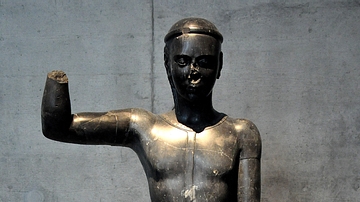
Image
Statue of God Min
This marble statue depicts a standing-striding figure of the god Min and was found at Hadrian's villa (Tivoli), modern-day Italy. Roman period, circa 130 CE.(State Museum of Egyptian Art, Munich, Germany).
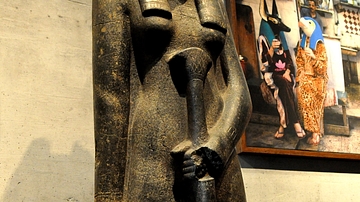
Image
Goddess Sekhmet Statue
Granite standing figure of goddess Sekhmet. From goddess Mut temple at Karnak, modern-day Egypt. New Kingdom, 19th Dynasty,circa 1250 BCE. (State Museum of Egyptian Art, Munich, Germany).
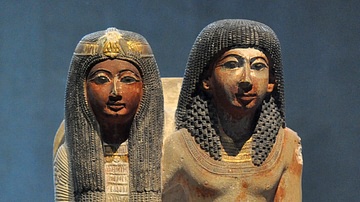
Image
Statue of Neje and His Mother
Limestone statue of the seated figure of priest Neje and Mutnefret, his mother. From modern-day Egypt. New Kingdom, 19th Dynasty, 13th and 12 centuries BCE. (State Museum of Egyptian Art, Munich, Germany).